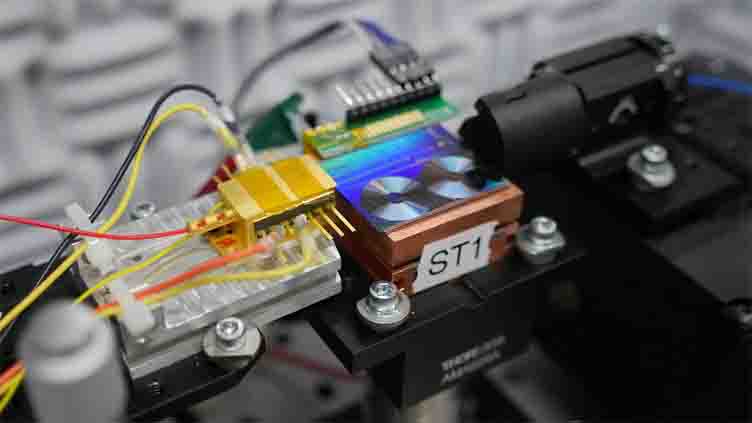Compact chip revolutionize navigation, communication, and more

Technology
This innovative small size chip would bring more accurate and timely response
(Web Desk) - Scientists at the National Institute of Standards and Technology (NIST) have unveiled a revolutionary time-keeping chip with the ability to transform light into microwaves.
This innovation has the potential to revolutionize critical technologies like GPS, telecommunications, radar systems, and more.
The compact chip, comparable in size to a digital camera memory card, represents a remarkable reduction from the once bulky tabletop-sized systems.
Its capacity to convert light into microwaves promises enhanced precision and accuracy, with timing jitter reduced to an impressive 15 femtoseconds – a fraction of a second.
The implications of this breakthrough extend to various applications, including heightened radar sensitivity, improved accuracy for analog-to-digital converters, and clearer astronomical images from telescopes.
This pioneering demonstration not only signifies a leap forward in performance but also introduces a practical dimension by significantly reducing power consumption.
With the potential to impact everyday devices, this compact time-keeping chip holds promise for a future where timing and communication technologies achieve unprecedented levels of stability and accuracy.
Currently, certain components of the technology are positioned external to the chip as their efficacy undergoes testing.
However, the primary goal of this initiative is to consolidate all the diverse elements such as lasers, detectors, modulators, and optical amplifiers onto a singular chip.
The integration of each component onto a unified chip holds the potential to significantly reduce both the system's size and power consumption.
This implies that the technology can seamlessly fit into compact devices without demanding excessive energy or specialized expertise.
Scientists utilize a semiconductor laser as a crucial tool in their endeavours.
This laser functions as a reliable source of light directed into a confined space known as a reference cavity, resembling a miniature room.
Within this cavity, the light undergoes reflection, creating specific frequencies that align with the dimensions of the container.
As a result, the peaks and troughs of the light waves perfectly match the confines of the cavity walls.
“The goal is to make all these parts work together effectively on a single platform, which would greatly reduce the loss of signals and remove the need for extra technology,” said Quinlan. “Phase one of this project was to show that all these individual pieces work together. Phase two is putting them together on the chip.”
As a consequence, the light accumulates energy at those specific frequencies, and this energy is harnessed to uphold the laser's frequency stability.
Subsequently, a frequency comb is employed to convert the stable light into microwaves, altering high-frequency light into lower-frequency microwave signals.
These precise microwaves play a crucial role in technologies such as communication networks, navigation systems, and radar, providing accurate timing and synchronization.
For instance, in the case of busy cellular networks managing numerous phone calls, synchronization of signals is imperative.
The accurate timing alignment of signals enables the cell network to effectively coordinate and oversee the transmission and reception of data from various devices, such as your cellphone.
This guarantees the simultaneous handling of multiple phone calls on the network without encountering substantial delays or interruptions.
Similarly, in radar applications utilized for object detection, like airplanes and weather patterns, precise timing plays a vital role in accurately measuring the duration of signals' reflections.


